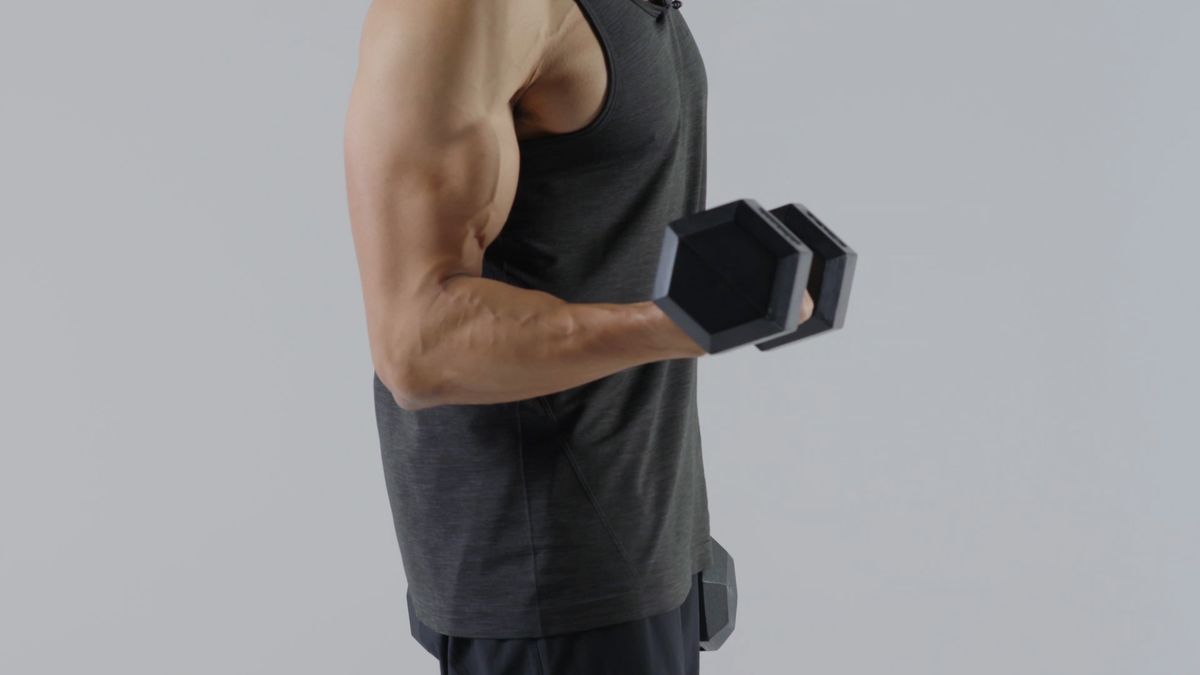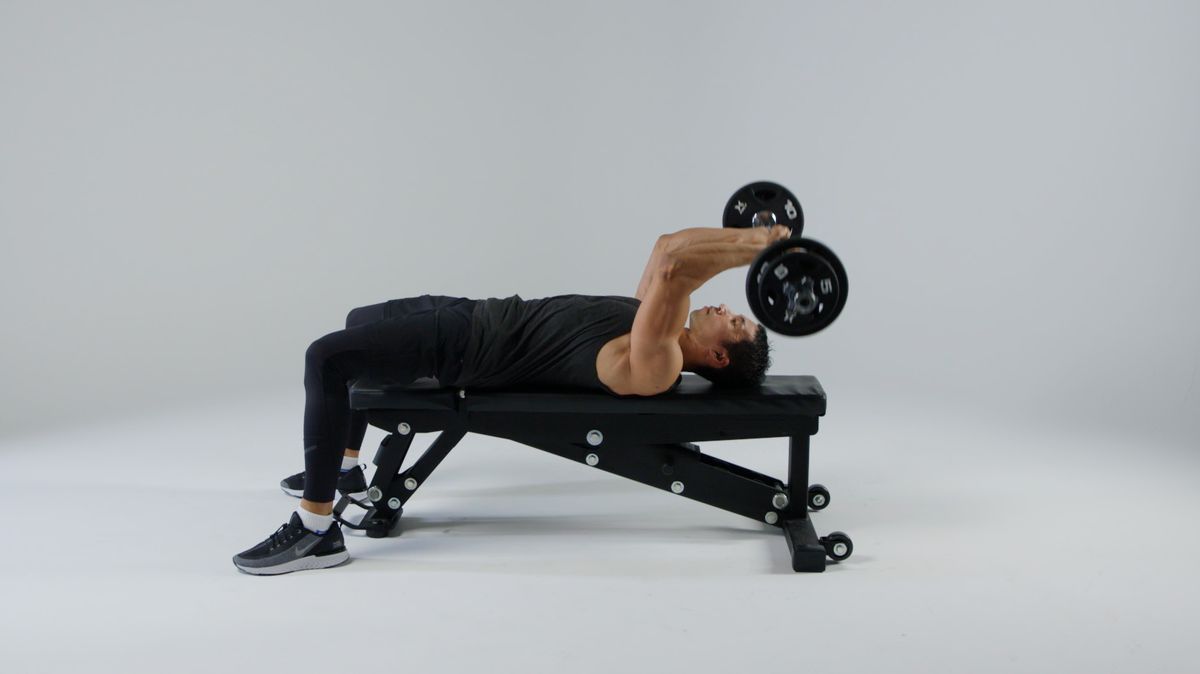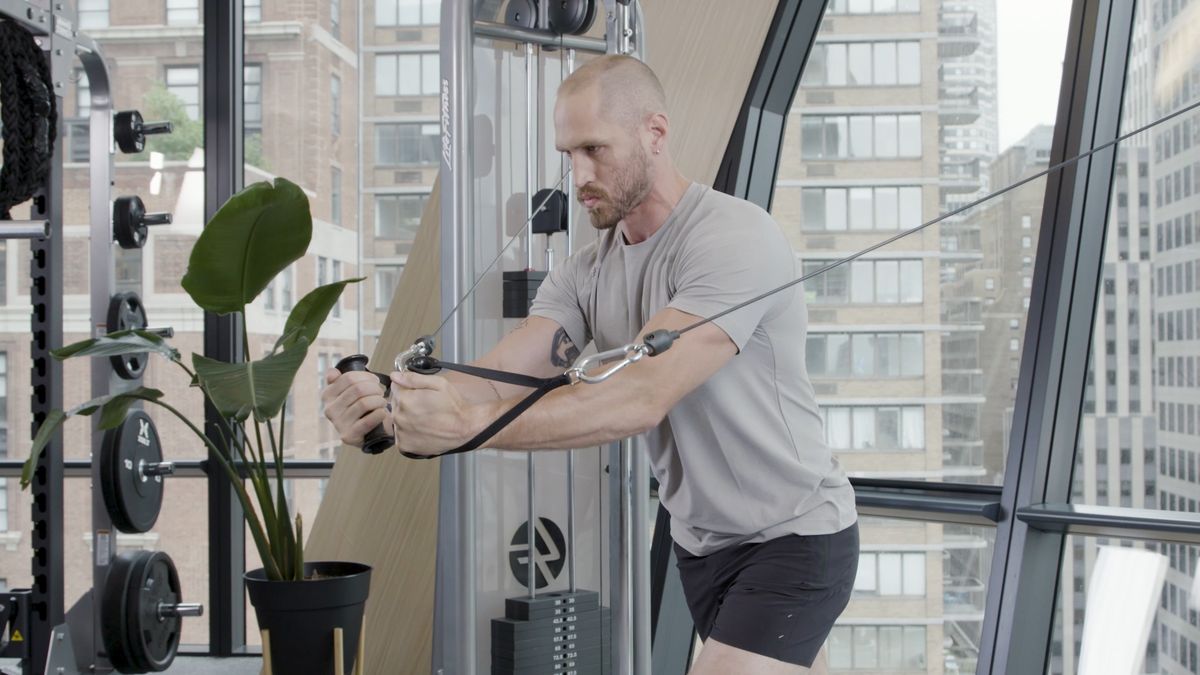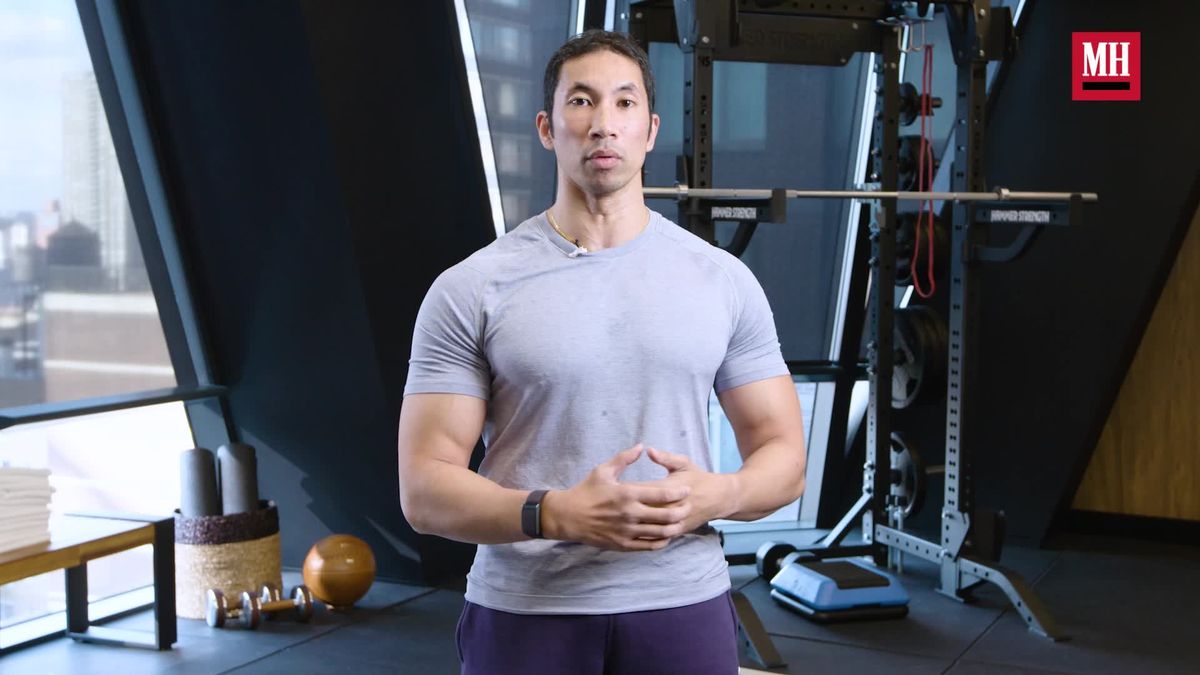
YOU CAN CLASSIFY exercises in a number of ways—by muscle group, movement pattern, or implement used, for example—but one of the most basic methods is whether it’s a compound movement (using multiple joints) or an isolation movement (which requires movement at only one joint). You can think about this in fairly simple terms: Isolation exercises mean you’re hyper-focused on building one muscle, while compound exercises will expand your scope of movement outside of one single body part.
Lately, isolation exercises have taken some heat in contemporary gym circles. Working with a laser focus on one muscle group at a time isn’t optimally functional, some argue. Others point out that you’ll train the targets of isolation exercises and work them to an almost equal degree in many compound moves (as anyone who has felt the burn in their biceps during a chinup can attest)—which could arguably make the more focused exercises redundant.
And you know what? They aren’t totally wrong—but isolation exercises still deserve a place in your training program, because they fill in many gaps that more comprehensive exercises often miss.
What Is an Isolation Exercise?
An isolation exercise is by definition a movement that targets a single muscle group and involves the movement of a single joint. These include training staples like the calf raise, biceps curl, triceps extension, and leg curl.
That’s less than desirable from an efficiency standpoint—especially when compared to the multi-muscle compound movements functional training adherents are more likely to boost. Good examples of compound movements include the deadlift, squat, bench press, lunge, and pullup. All of these more complicated exercises engage more lean mass, burn more calories, and tend to trigger a greater adaptation (i.e., muscle and strength building) response.
Benefits of Isolation Exercises
The demonization of isolation exercises is more than a bit short-sighted. There are many things that isolation exercises do much better than compound exercises—especially if your training goals aren’t solely focused on athletic performance.
For starters, they allow you to pay special attention to muscles or muscle groups that matter to your specific training goals. Maybe you want biceps that stretch the limits of your shirt sleeves, calves that strike fear into the hearts of road race competitors, or lobster-claw triceps that help you ace serves in beach volleyball.
Isolation exercises can help you build all of them. But perhaps more importantly, performing exercises that allow you to isolate individual muscle groups can help you eliminate muscle imbalances, more effectively rehab sports injuries, and eliminate weak links that might be holding you back both on the playing field and in the weight room.
In short, isolation exercises can be an important component to your training, athletic longevity, everyday functionality, and overall performance as compound moves—as long as you know how to strike a balance between the two in your workout program.
How You Can Add Isolation Exercises to Your Workouts
Think of isolation exercises as the essential accessories that will round out your training plan. Anchor your workouts in compound movements, making them the foundation and bulk of your training, and strategically incorporate isolation exercises as needed. In addition to the benefits mentioned above, isolation exercises can help you increase your training volume for a particular muscle group. Check out these example workouts for a plan to do just that.
That strategy can be a game-changer for hypertrophy. But no matter what your training goal is, adding isolation exercises to your weekly routine can help you achieve it by bringing focus to muscles that can benefit from that extra attention.
Key Isolation Exercises
Biceps Curl

Why: This tried-and-true exercise is focused on isolating your biceps, as you work to move only at the elbow joint to lift the weight up toward you and make the angle shorter (flexion).
How to Do It:
- Stand with your feet hip-width apart, holding a pair of dumbbells in a neutral grip (palms facing each other). Squeeze your shoulder blades, abs, and glutes to create full-body tension.
- Curl the dumbbell up, moving only at the elbow joint. Keep your upper arms still and perpendicular to the floor.
- As you curl up, rotate the dumbbell inward so that your palm faces the sky. The weight should be parallel to the floor by the time you reach the halfway point.
- Continue raising the weight up, squeezing the biceps at the top of the movement.
- Lower the weight back down with control.
Sets and Reps: Start with 3 sets of 8 to 12 reps per arm
Skull Crusher

Why: You’ll train the triceps when you flip the script to move at the elbow joint the other way, to make the angle wider (extension).
How to Do It:
- Start by lying back on the bench. Don’t arch your back—drive your shoulder blades into the bench, squeeze your abs and glutes, and keep your feet flat on the floor.
- Press the weight straight up above your chest. Your upper arm should be just past 90 degrees, at a 91 or 92 degree angle. Keep your wrists strong and a tight grip on the bar.
- Lower the weight slowly down to an inch above your forehead, moving only at the elbows. Don’t allow your shoulders to shift forward; keep your upper arm still.
- Drive the weight back up (again moving only at the elbows), squeezing your triceps at the top.
Sets and Reps: 3 sets of 8 to 10 reps
Cable Fly

Why: This one is a bit more complicated, but we’ll count it. You’re working to isolate your chest muscles through adduction, emphasizing the squeeze at the top of the movement to a degree you won’t be able to achieve through pressing movements.
How to Do It:
- Start set up inside a cable machine, with its handles just above shoulder height. Grasp the cables in the base of your palm, without taking a tight grip.
- Step forward with your feet in the same plane, facing forward. Keep you shoulders, abs, and glutes tight to create full-body tension. Your hips should be facing forward.
- Squeeze your chest to bring your elbows together, like you’re trying to hug a tree. Turn your pinkies up in a scooping motion, driving your palms up.
- Stop when your hands are almost touching, then pause and squeeze your chest.
- Reverse the movement, controlling the weight back to the starting position.
Sets and Reps: 3 sets of 10 to 12 reps
Calf Raise

Why: Shift your focus to the lower body by training your calf muscles as you move your ankle joints through flexion and extension.
How to Do It:
- Grab a small step to elevate your heels. Situate it a little bit behind the rack—about four to five inches back.
- Stabilize the step by placing a heavy dumbbell or kettlebell in front of it. This will prevent it from sliding.
- Situate the safety bars so they are a little lower than your shoulders when you’re standing up on the step.
- For best results, take off your shoes before you begin the movement. Some stiffer shoes, like high tops, won’t allow for proper range of motion you need to properly execute this move.
- Bring your body underneath the bar. Think about pulling your elbows down and back in line with your torso to tighten up the upper body.
- From here, lean the bar into the rack. This eliminates the challenge of balance, allowing you to really load up the weight once you’re ready for it.
- Slowly lower your heels down to the ground to where you feel a good stretch through your calves. Hold that stretch for 2 seconds or so before pushing through your toes to power upward.
- As you drive up, think about continuously driving the bar into the rack. Squeeze at the top, when your ankles are fully extended.
Sets and Reps: 3 to 4 sets of 20 to 25 reps
Leg Curl

Why: You’ll do better using a machine for this movement, but as MH fitness director Ebenezer Samuel, C.S.C.S. demonstrates, you can use other means to work knee flexion and isolate your hamstrings. Try the lying band leg curl variation demonstrated in the clip above for best results.
How to Do It:
- Anchor a power band up high, such at to the top of a power rack.
- Lie down underneath it. Lace the band across your heel on one side.
- Bring the leg up to where you have a 90 degree bend in the hip. Stabilize that leg by placing your hand on your knee to keep it in one place.
- Curl your heel down, squeezing your calf in toward your hamstrings.
- Slowly straighten out the knee to return the heel up.
Sets and Reps: Aim for 3 sets of 8 to 12 reps.
